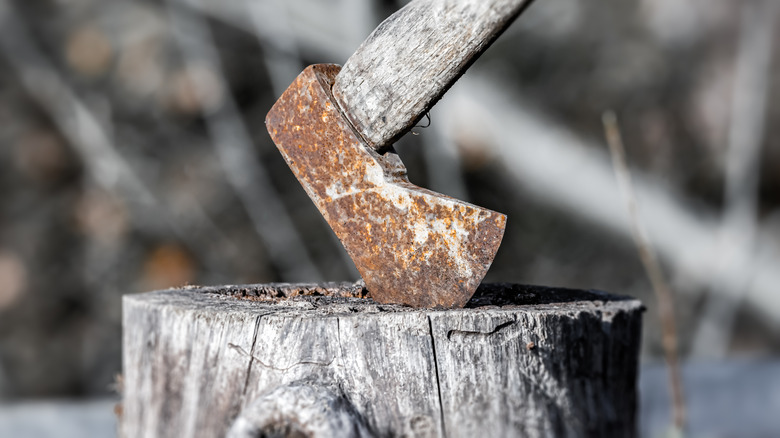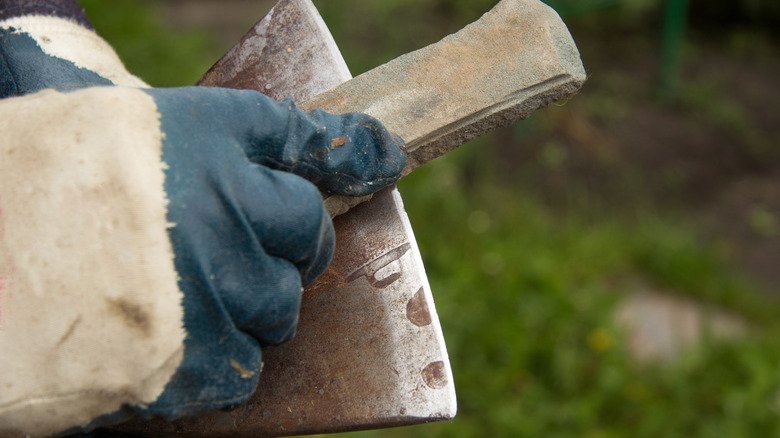How To Sharpen An Axe To Perfection (& The Best Thing To Use)
Whether you use your axe to cut down large pieces of wood or the game you hunt, a blunt axe is not just annoying — it's downright dangerous. That's because without a sharp blade, you unconsciously apply more force to your chops. This extra force impedes accuracy, meaning that you have less control of the tool you're swinging. Without a sufficient degree of control, you can not only damage the item you're chopping, but also hurt yourself (or others nearby) in the process. Fortunately, sharpening an axe is a straightforward enough DIY task that doesn't need professional involvement — as long as you have some patience and the right tools on hand. However, there's some nuance to the technique, and it's not the same method you'd use for, say, sharpening your garden shears.
Crucially, you'll need to choose the correct tool for sharpening. It has to be a professional sharpener that's suited specifically for the condition of the axe (you can't lean on the same aluminum foil hack you'd use to sharpen your dull kitchen knives). Commonly used sharpeners include belt sanders, grinders, sharpening stones, files, sandpaper, and strops. The best thing to use for sharpening a knife that's extremely dull or damaged is a file, although a coarse, diamond-coated stone will work, too. Meanwhile, touching up a well-cared-for blade is best done with a finer stone, then sandpaper and strop. Below, we'll walk you through the sharpening process for dull neglected blades, and those that need nothing more than a quick touch-up to be razor-sharp.
Steps for getting the sharpest blade possible out of your axe
If your axe is quite dull, or has a blade with visible damage on it, it will need what's known as a "coarse sharpening." To begin, secure the axe in a vice and don a pair of working gloves; these precautions help you avoid cutting yourself. Next, mark the surface of the blade you want to sharpen with a permanent marker — these markings will guide your motions when you begin. Now, you can begin sharpening by pushing the file down on the edge of the blade at about a 20-degree angle. After several strokes, flip the axe over, and perform the same procedure on the other side of the blade, sticking with a consistent number of strokes on both sides. Then turn the axe again, and reposition the file to an angle that's less steep, then continue with filing the blade down. When you're done with the file and the markings are gone, wet the blade with water, and sharpen both sides of the blade with a coarse-grit stone, using orbital movements. Finally, if you wish, you can work the edge with a leather strop to eliminate any imperfections caused by the stone's grit.
For an axe that's in relatively good condition but still requires a bit of maintenance, you can skip the filing and get right into fine sharpening. This process involves the same steps we covered above with the sharpening stone and the leather strop. When you're done, check if the axe is sharp enough by trying to cut through the edge of a sheet of paper; if the blade slices through the paper, it's razor-sharp! If it doesn't, then you must sharpen it a bit more.

